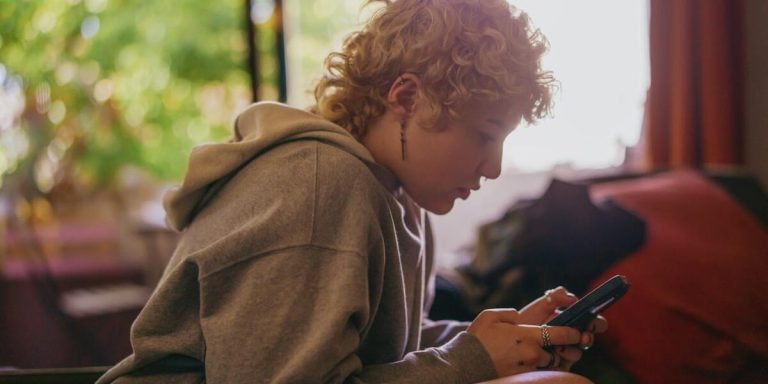Define PBIS: Understanding Positive Behavioral Interventions and Supports in Childhood Education
To truly define PBIS, or Positive Behavioral Interventions and Supports in the context of childhood education, it becomes essential to understand that this framework isn’t just a program, but an approach aimed at improving student’s social outcomes. It is one of the most effective strategies currently being used in schools worldwide to foster engaging environments conducive for learning.
By providing tools to teachers and educators on how they can both prevent disruptive behavior and respond effectively when challenges arise, PBIS promotes an overall positive school climate. This significantly impacts students’ academic performance as well as boosting individual mental health & wellness – making it invaluable within Special Education Resources and Support.
Did you know?
Did you know that PBIS, despite being a relatively modern approach in pedagogy, has roots dating back to the 1960s and was initially implemented as part of special education programs?
Understanding PBIS: A Comprehensive Overview
Positive Behavior Interventions and Supports, commonly known as PBIS, is a proactive approach to establish the behavioral supports needed for children to achieve social, emotional and academic success. Rooted in evidence-based practices, this framework aims at enhancing school climate through constructive interventions that promote positive behavior change. It’s about creating an environment where students feel safe and are set up for lasting success.
In more practical terms, when we define PBIS within context of childhood education today in 2023 – it revolves around three primary components: prevention strategies which decrease problem behaviors; instruction aimed towards teaching new skills; and responses designed to reinforce desired behaviors while discouraging negative ones. In doing so it functions from individual classroom settings right up till district wide implementation spanning multiple schools.
Technology has played a significant role in advancing education resources available both inside the classroom as well remotely thanks to internet based learning platforms. When intertwined with special needs education like PBIS framework application becomes even more profound because technology integration opens avenues previously unseen or unexplored due its dynamic nature allowing tailored solutions fitting specific learner’s need besides encouraging self-paced learning which is highly beneficial especially catering learners who might struggle keeping pace otherwise.
What is PBIS? Breaking Down the Basics
Defining PBIS is simple – it’s an ingrained model that assists teachers in fostering positive behavior among their students. This holistic approach enhances the quality of student-teacher relationships while also improving overall school climate.
To help efficiently define PBIS, we will break down its components:
1. **Behavior Expectations**: In this system, appropriate behaviors are defined clearly so every student understands what is expected of them both inside and outside classrooms.
2. **Consistent Consequences**: When rules aren’t met with consistency or when conduct deviates from expectations, consequences follow suit – not as punishments but constructive responses aimed at guiding correct behavior.
3. **Teaching New Skills**: Teachers play a crucial role by modeling appropriate behaviors themselves before teaching these skills explicitly to students which helps set an example they can easily follow.
4.H**ata Collection System:** Schools implementing PBIS have explicit data systems to record behavioral incidents comprehensively – providing much needed grounds upon which decisions can be made regarding particular interventions or total system adjustments if necessary.
5.By encompassing above steps well within curriculum marking end-to-end process oriented mechanism wherein negative issues get addressed even before they arise making learning environment vibrant one bringing forth number benefits like decreased discipline referrals increased instruction time improved test scores boosting overall productivity levels even.
The Role of PBIS in Special Education
“Positive Behavior Interventions and Supports, or PBIS, plays an integral role in special education. But first let’s define PBIS – it embodies a proactive approach that focuses on teaching positive behaviors rather than punishing negative ones.
In the context of special education resources and support today, technology integration has enabled more personalized learning experiences for students with diverse needs. For instance, assistive technologies like speech-to-text applications aid learners who struggle with written communication or have physical impairments.
The widespread adoption of digital classrooms further empowers teachers to collect behavioral data effortlessly using tech tools equipped with advanced analytics capabilities. Herein lies another way we see the impact of PBIS: The collected data aids educators to act preemptively based on evidence-based interventions aligning with each student’s Individualized Education Program (IEP).
An explicit example is online educational games designed around behaviour modelling principles. Students are rewarded after they exhibit desired behaviors within these virtual environments as part of applying principles behind PBIS digitally!
Furthermore, specialist ed-tech software offers interactive lessons which incorporate adapted instruction methods consistent with best practices outlined by proponents of PBIS framework– making both general and specialized instructions easily accessible for differently-abled learners.
Implementing Positive Behavioral Interventions and Supports
The implementation of Positive Behavioral Interventions and Supports (PBIS) in the educational setting is an approach that has proven beneficial for both teachers and students. PBIS, for those who are unfamiliar with it, is a proactive tactic utilized within schools to encourage positive behavior while simultaneously discouraging negative ones. This strategy acknowledges good conduct rather than focusing solely on punishing unfavorable actions.
Introduced as part of special education resources back in the 1980’s, PBIS characteristically uses data-driven decisions to improve school-wide cultural climate significantly reducing disciplinary incidents and boosting academic performance outcomes as well. With this framework at play, children can experience an environment where positivity thrives allowing them to harness their full potential acadically.
Moreover, integrating technology into such efforts apparentedly reinforces this system’s effectiveness even more today especially when defining PBIS from a contemporary perspective. By leveraging innovative platforms like mobile applications or web-based tools coupled under enhanced internet connectivity available widely by 2023; educators now have hands-on means not only track but also adjust behavioral plans swiftly based upon realtime gathered student information ensuring every child gets individualized attention they require because one size does not fit all.
Strategies for Success with PBIS in the Classroom
In the world of education, one term that may pop up often is Positive Behavior Interventions and Supports (PBIS). PBIS integrates valued outcomes, empirical validation, systems change/organization development theory to enhance broad quality of life results. But how do we define PBIS?
It’s a proactive approach in schools for improving socio-emotional competencies while decreasing disruptive behaviors among all students.
Explore strategies for successfully implementing this system in your classroom as part of technology integration in education and as a resource for special education support.
1. Clear Expectations: Clearly defining behavioral expectations is key within a successful implementation model. Use technology tools like interactive whiteboards or virtual classrooms to illustrate these rules visually too.
2. Consistent Reinforcement: This strategy revolves around acknowledging good behavior more frequently than negative actions – potentially via technological rewards such as extra computer time or opportunities to engage with educational games online can be effective incentives.
3. Data-Driven Decision Making: Utilizing technology-enabled assessment tools helps educators channel data from student behavior directly toward refining their support strategies enhancing teaching effectiveness immensely.
4. Inclusive Environment Setup: For children needing special education resources, having technologies integrated text-to-speech software features ensure inclusivity whilst adhering closely following the principles of Universal Design for Learning (UDL).
5.Implementation Team Formation: Formulating teams comprising teachers who’ve undergone formal training on tech-tools usage plus coordinating regular team meetings works wonders too!
Measuring the Impact of PBIS on Student Outcomes
Understanding the exact impact of Positive Behavioral Interventions and Supports (PBIS) on student outcomes can greatly influence how educational institutions shape their methods. One way to clearly define PBIS is by viewing it as a systematic approach in enhancing academic and social behavior outcomes for all students.
The measurable impact of implementing this system goes beyond simply observing improved behaviors, reduced disciplinary referrals or even enhanced school climate. It’s about acknowledging that each child has unique learning requirements that necessitate personalized strategies.
In our technologically advanced 2023 education landscape, we harness these advancements via technology integration in order to tailor recommendations specific to individual learner profiles – helping pinpoint where interventions are needed most while fostering inclusivity throughout the process.
Advanced tools like online surveys capture real-time data reflecting changes in behavioral patterns post-PBIS implementation. These digital resources prove instrumental not only in gauging precise effects but also helpful when tracking evolutionary trends over time barring interventions made along the way.
Teachers leverage Artificial Intelligence-powered applications for accurate progress monitoring featuring visual dashboards displaying comparative performance analytics pre-and-post-intervention periods. This paves way towards informed decision-making when strategizing subsequent steps after initial deployment of PBIS techniques; thus making immediate adjustments possible wherever necessary benefiting both educators and learners alike.
Resources and Tools for Effective PBIS Adoption
In the realm of childhood education, Positive Behavioral Interventions and Supports (PBIS) is a transformative approach that can redefine the learning environment. The core idea behind PBIS revolves around proactive strategies for defining, teaching, and supporting appropriate student behaviors to foster positive school climate. But how does one effectively adopt PBIS within an educational setting?
This question begs acute attention.
The key lies in utilizing specialized resources and cutting-edge technological tools designed specifically for integrating PBIS into classrooms or home-based learning environments. There are digital space platforms providing personalized lesson plans incorporating behavior-focused techniques imbibed with fundamental principles of reinforced positivity. Think apps featuring virtual rewards systems as simple yet effective means to motivate children towards desired outcomes – not just academically but socially too.
Let’s also pay heed to online special-education communities which play a crucial role in this integration process; they’re treasure troves filled with insights from educators worldwide who have successfully fused technology with PBIS methodologies. These forums often provide tried-and-tested advice on identifying individualized interventions based on each child’s needs – because remember: no two journeys are alike! Drawing from these resources makes adoption far more targeted and effectual.
Curated List of Essential PBIS Materials for Educators
In the pursuit of a successful PBIS (Positive Behavior Interventions and Supports) program, picking out essential resources is critical. To help you seamlessly integrate this strategy into your curriculum, we’ve put together an all-encompassing list that centers around technology integration in education.
1. “PBIS Apps” – This application has become pivotal for educators aiming to incorporate PBIS into their classrooms. Through digital interfaces supported by real-time data collection and analytics features, teachers can systematically define pbis rules while tracking students’ behavior with ease.
2.The National Technical Assistance Center on Positive Behavioral Interventions & Supports offers comprehensive materials like training manuals and research-based guides to facilitate effective adoption of PBIS strategies.
Technology Solutions to Support a School-wide PBIS Framework
Firstly, it’s crucial to define PBIS. It is an evidence-based three-tiered approach aimed at improving overall school climate whilst promoting positive behavior among students. Integrating technology into such a system can bring exponential benefits.
One key area that tech supports are data management systems specifically designed for the ongoing monitoring required in PBIS implementation. These technologies assist educators by digitizing student behavioral records; instead of manually tracking behaviors on paper, they allow quick entry digitally – reducing errors while providing real-time access to collated information supporting immediate decision-making regarding interventions or rewards.
Another advantage comes from specialized educational software applications which cater towards individual learning needs – vital when considering special education resources and support within any comprehensive PBIS scheme.
In 2023 we see an enhanced incorporation of game elements -known as gamification- especially when targeting younger age groups who respond positively to subtle lessons embedded in gameplay mechanics.
The rise in digital communication platforms has also revolutionized parental engagement strategies underpinning effective adoption of a fruitful PBIS program which indeed improves outcomes significantly better compared past practices without these means available prior years.
Conclusion
In a nutshell, to define PBIS in our everyday conversations is to talk about positive strategies for teaching kids the importance of good behaviors. It’s not simply collecting data or following procedures but creating an environment that empowers every child and contributes fundamentally towards their holistic growth – all while keeping them enthusiastic about learning.
As you strive to implement these ideal practices at home or your educational setting, remember this journey doesn’t end here! Our website offers troves of insightful knowledge on educating children as well as comprehensive support resources for both parents and educators alike. Trust us when we say – with each page navigation, there’s something valuable awaiting you right around the corner!
So don’t hesitate; dive into more information today by browsing through our site.







